Step back in time to the kitchens of 1950s America, where dinner tables told stories of post-war prosperity, innovative convenience foods, and cherished family traditions. These weren’t just meals – they were cultural touchstones that defined an era when TV dinners were new and exciting, and home cooking balanced tradition with modern shortcuts. The following foods weren’t just eaten; they were woven into the fabric of middle-class American life during this golden decade.
1. Meatloaf: The Monday Night Marvel
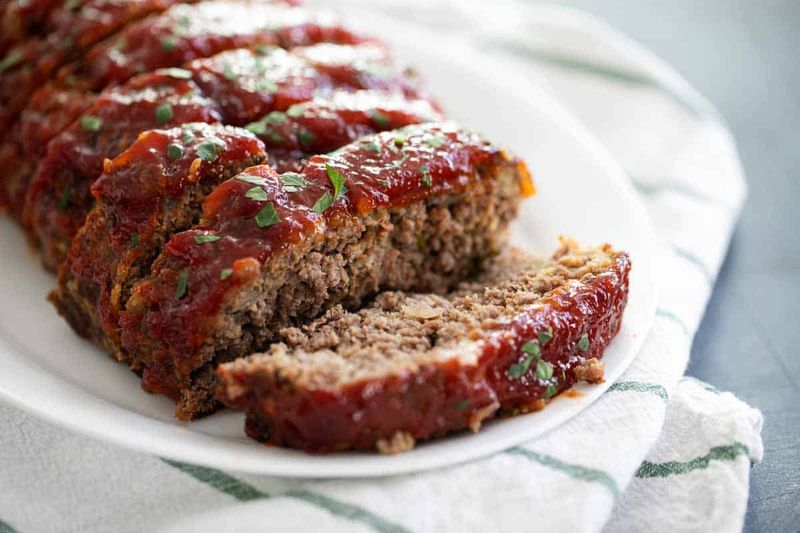
Ground beef transformed into a savory, ketchup-glazed masterpiece was practically a religious experience in 1950s households. Mothers passed down their secret recipes like precious heirlooms, each family claiming theirs was the absolute best in the neighborhood.
Stretched with breadcrumbs and bulked up with onions, this economical wonder could feed a family of five with enough leftovers for sandwiches the next day. The signature ketchup glaze created a sweet-tangy crust that children would fight over.
Served alongside mashed potatoes and canned vegetables, meatloaf represented comfort and security in an uncertain atomic age. Many recipes featured surprise ingredients like crushed saltines or hidden hard-boiled eggs that delighted dinner guests when sliced.
2. Tuna Noodle Casserole: Budget-Friendly Brilliance
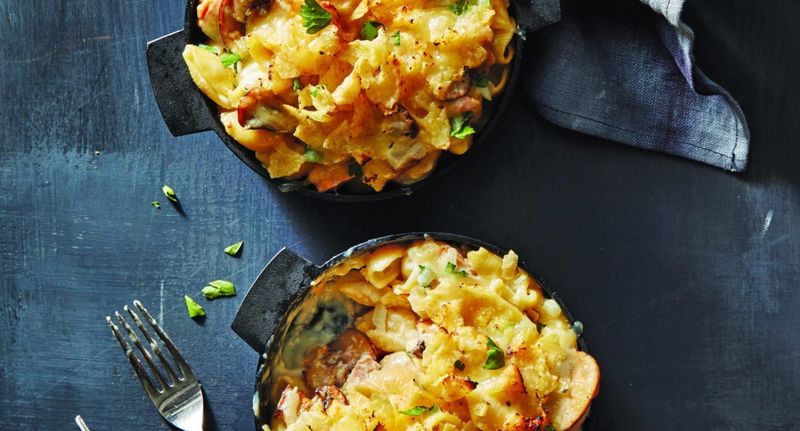
Friday nights often meant tuna casserole – that magical concoction where a humble can of tuna stretched to feed the whole brood. Campbell’s cream of mushroom soup provided the creamy backbone, transforming pantry staples into something greater than the sum of its parts.
Housewives took pride in their special touches – some added peas for color, others swore by water chestnuts for crunch. The crowning glory was always the crispy topping: crushed potato chips, breadcrumbs, or even cornflakes created that signature golden crust.
Women’s magazines featured countless variations, but the basic formula remained sacred. This dish symbolized American ingenuity – making something delicious from shelf-stable ingredients that could wait patiently in the pantry until needed.
3. Pot Roast: Sunday’s Sacred Dinner
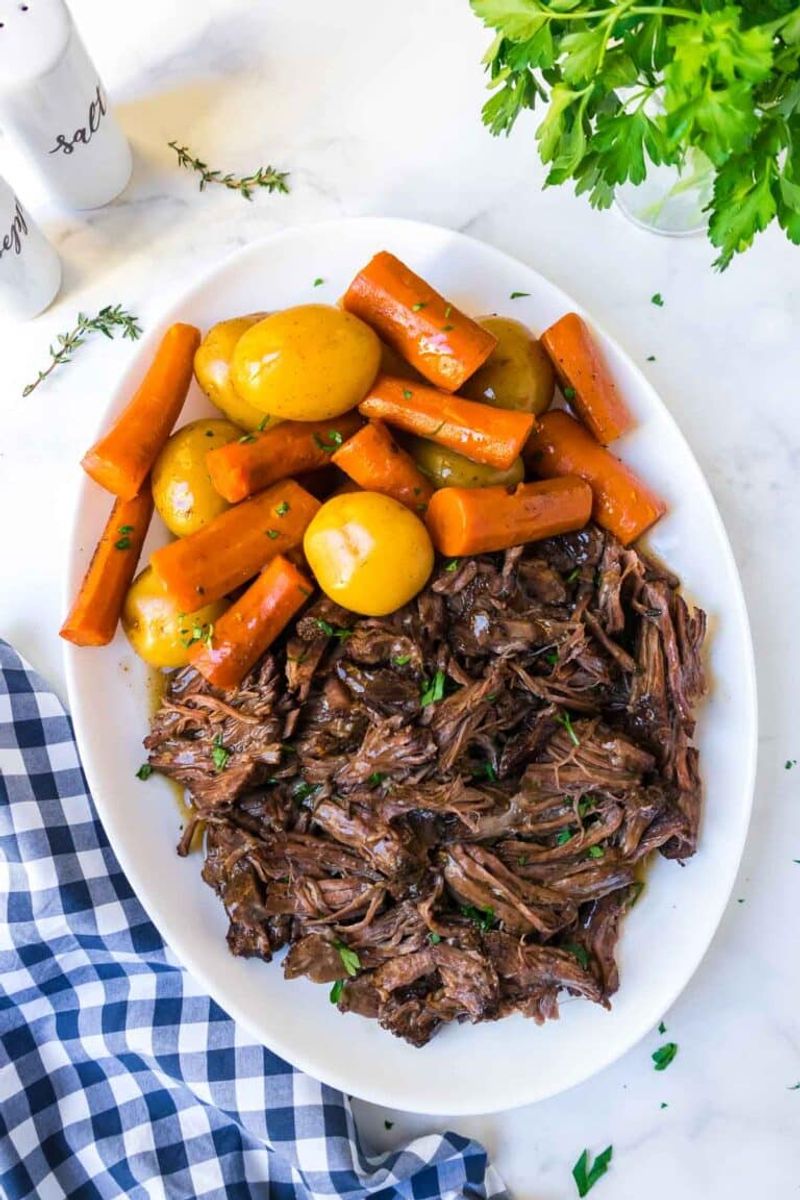
Nothing announced “Sunday dinner” quite like the aroma of pot roast slow-cooking after church. This wasn’t merely dinner – it was a weekly ritual where tough cuts of beef surrendered to low heat, becoming fork-tender treasures swimming alongside potatoes and carrots.
Families gathered around as father performed the ceremonial carving. The meat’s transformation represented kitchen alchemy at its finest – patience rewarded with rich flavors and gravy that demanded to be sopped up with pillowy dinner rolls.
Many a child learned the rhythm of family life through this weekly feast. The leftover meat would reappear in hash or sandwiches, stretching Sunday’s splurge through lean weekday meals. In an era before slow cookers, this dish showcased a housewife’s timing and attention to detail.
4. Ham with Pineapple Rings: Sweet-Savory Showstopper
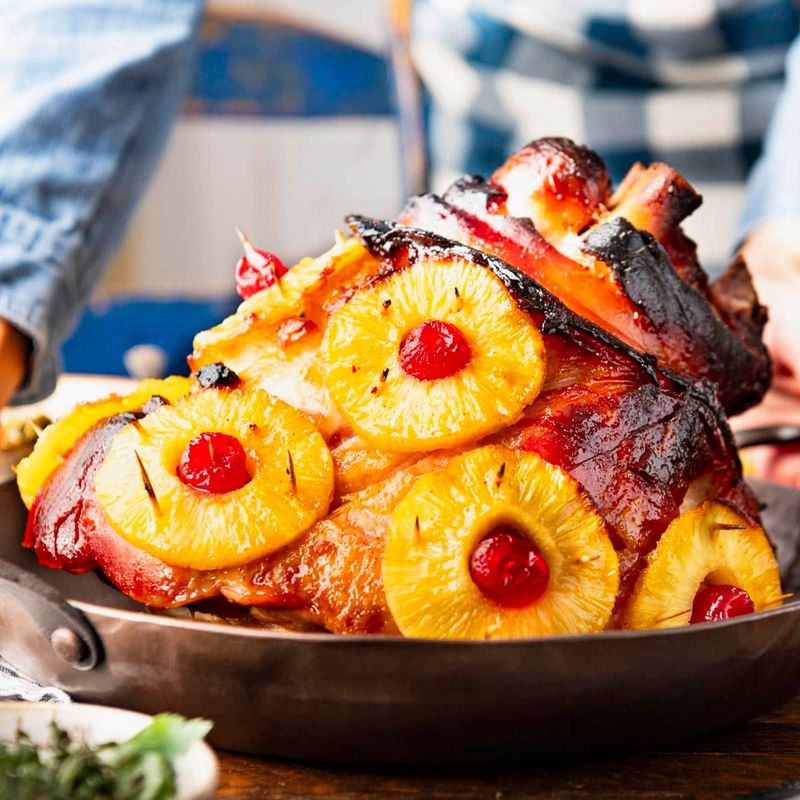
Gleaming like a jewel-studded crown, ham adorned with pineapple rings and maraschino cherries represented the height of mid-century entertaining sophistication. The contrast of salty ham against sweet, caramelized pineapple captivated American palates newly adventurous after wartime rationing ended.
Canned pineapple, that miracle of modern food preservation, transformed an ordinary ham into something exotic and festive. Housewives secured the decorative fruit with whole cloves, creating a presentation that looked as impressive as it tasted.
Holiday tables weren’t complete without this centerpiece that whispered of tropical luxury. The ham’s pink interior against the bright yellow fruit rings made for stunning color photographs in women’s magazines, further cementing its must-have status for special occasions and Easter celebrations throughout the decade.
5. Fried Chicken: Crispy Weekend Treat
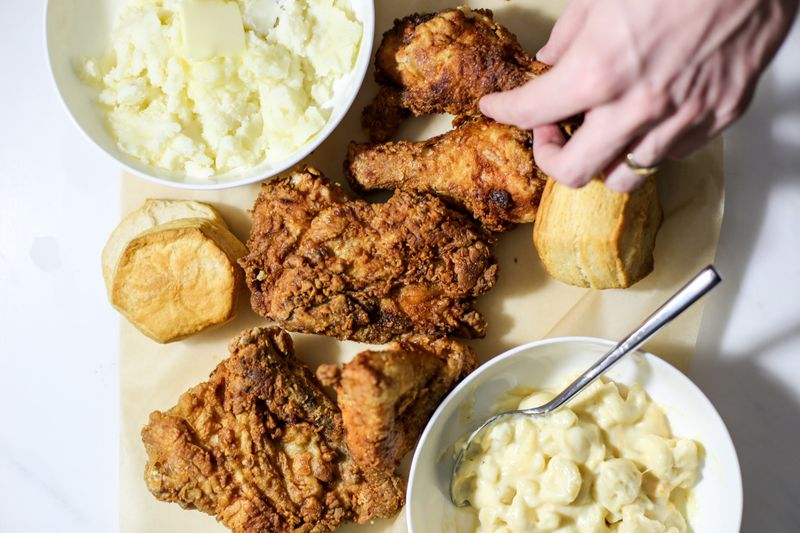
Before fast food chains made it ubiquitous, homemade fried chicken was weekend magic worth waiting for. Mothers and grandmothers guarded their techniques jealously – the perfect flour dredge, the right temperature, the secret to that crackling crust that yielded to juicy meat beneath.
Cast iron skillets passed down through generations were the only acceptable cooking vessel. The sound of chicken sizzling in hot fat announced a meal worth celebrating, often enjoyed outdoors during summer months when the cooking heat could escape the kitchen.
Served alongside mashed potatoes with milk gravy made from the precious drippings, this meal transformed ordinary Saturday nights into occasions. Children learned patience watching the pieces brown to golden perfection, knowing that drumsticks would be distributed based on good behavior and chore completion throughout the week.
6. Chipped Beef on Toast: Breakfast with a Military Past
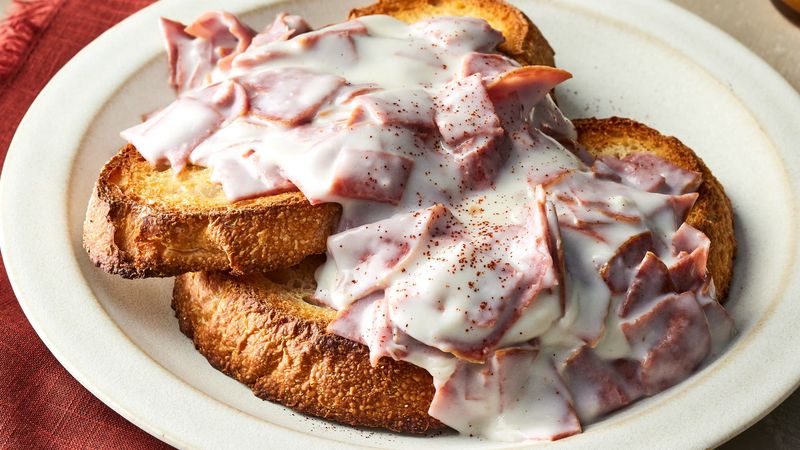
Veterans returning from World War II brought home a peculiar fondness for dried beef in creamy sauce poured over toast. Affectionately (or not-so-affectionately) nicknamed “S.O.S” in military mess halls, this humble dish found its way to civilian breakfast tables across America.
Packages of paper-thin dried beef were transformed with a simple white sauce into a filling meal that stretched limited budgets. Children giggled at father’s colorful explanations of the dish’s military nickname while mother pretended not to hear.
The salty, creamy concoction represented the blending of wartime practicality with homemaking ingenuity. Sometimes served over biscuits instead of toast, this meal bridged the gap between military experience and domestic life, becoming a curious comfort food that connected fathers to their service days and families to America’s recent history.
7. Jell-O Salads: Wobbly Works of Art
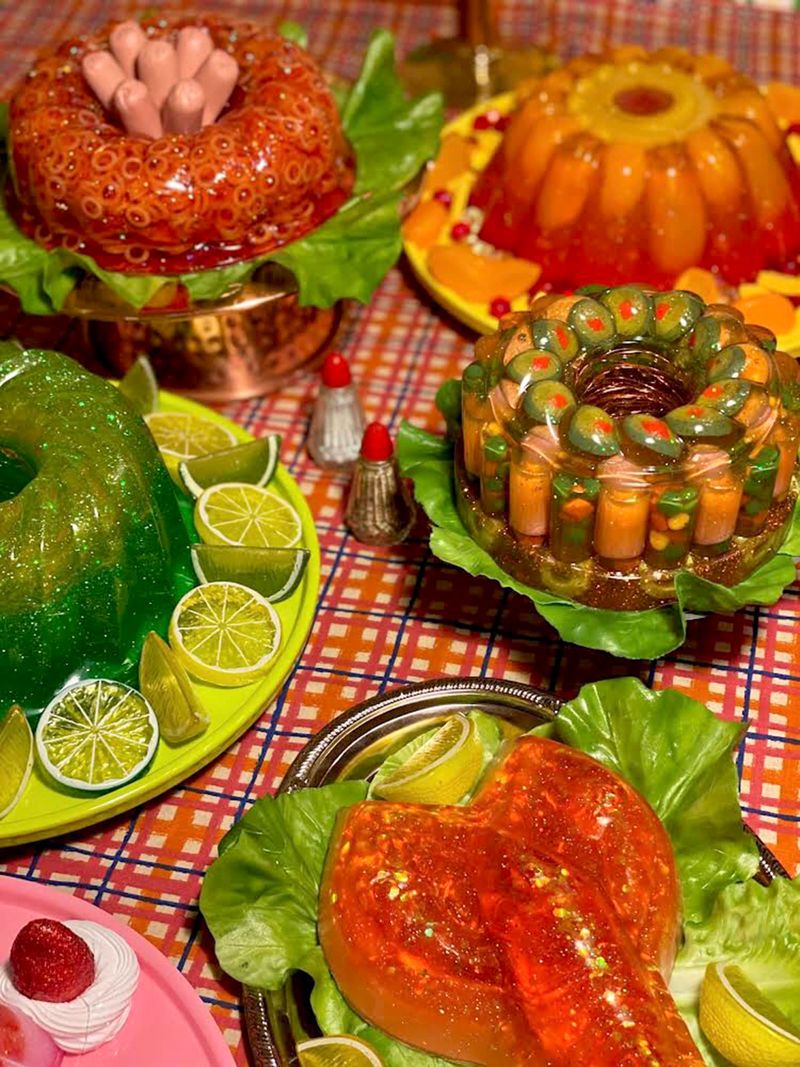
No ladies’ luncheon or family gathering was complete without the technicolor wonder of a molded Jell-O creation. These weren’t merely desserts but elaborate culinary sculptures showcasing the modern housewife’s creativity and daring.
Suspended within these shimmering towers were all manner of ingredients: fruit cocktail, grated carrots, celery, marshmallows, and even olives or tuna. Each layer required perfect timing and temperature control, making these jiggly masterpieces a testament to a cook’s skill.
Special copper molds in fish, flower, and ring shapes transformed the humble gelatin into conversation pieces. Women’s magazines featured monthly Jell-O innovations, and neighborhood potlucks became unofficial competitions for the most elaborate creation. The perfection of a properly unmolded Jell-O salad brought gasps of appreciation that validated hours of refrigerator babysitting.
8. Green Bean Casserole: Holiday Table Essential
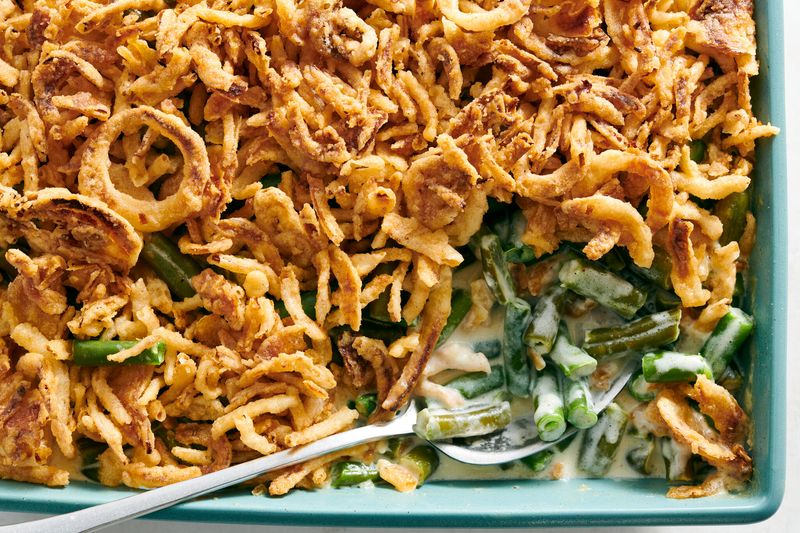
Born in the Campbell’s test kitchen in 1955, green bean casserole rocketed to fame as the perfect solution for harried hostesses. The genius combination of canned green beans, cream of mushroom soup, and crispy fried onions created a vegetable dish even children would eagerly devour.
The beauty lay in its simplicity – dump, stir, bake, and serve. No chopping, blanching, or fussing required. The contrast between the creamy beans and crunchy onion topping satisfied America’s growing texture consciousness in processed foods.
Originally created for a holiday cookbook feature, this dish quickly transcended seasonal boundaries to become year-round comfort food. The familiar red and white Campbell’s can became a pantry staple specifically for this purpose, and French’s fried onions found their culinary purpose. Few dishes better represent the marriage of convenience and creativity that defined 1950s cooking.
9. Macaroni and Cheese: The Original Kid-Pleaser
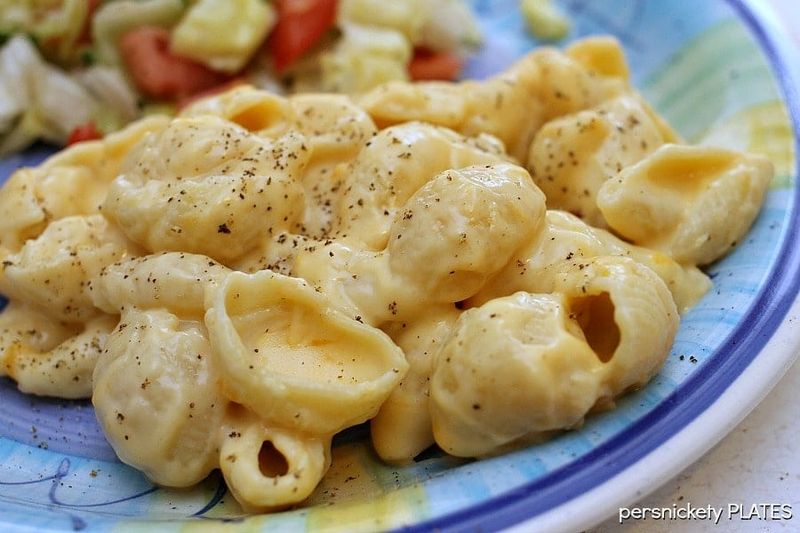
When Kraft introduced their boxed macaroni and cheese in 1937, no one could have predicted its meteoric rise during the 1950s. For just 19 cents, mothers could serve a complete protein dish that children actually requested by name – a miracle in households with picky eaters.
The distinctive blue box became a symbol of modern convenience, though many mothers doctored the basic recipe with additions like sliced hot dogs or tuna to create a complete meal. Some households maintained the tradition of homemade versions with real cheese sauce and breadcrumb topping for Sunday dinners.
The bright orange color (achieved through food coloring) became the expected standard for this dish, even for scratch-made versions. This comfort food crossed socioeconomic lines, appearing on tables in mansions and modest homes alike, uniting American children in their collective love for this simple pasta dish.
10. Coleslaw: The Versatile Side Dish
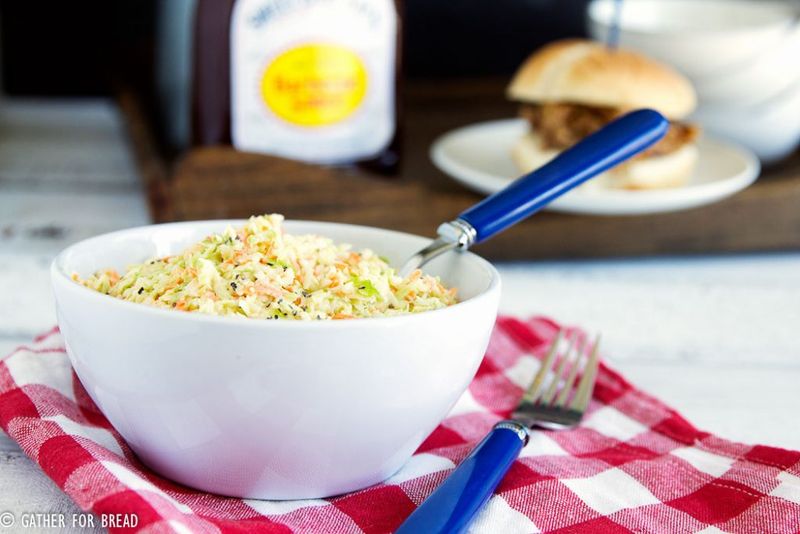
Long before pre-shredded cabbage appeared in produce sections, mothers wielded sharp knives to create this tangy, crunchy salad that accompanied everything from fried chicken to barbecue. The distinctive sweet-sour dressing cut through rich foods, providing necessary balance to heavy meals.
Regional variations abounded – some families preferred a creamy mayonnaise base while others championed vinegar-forward versions. Miracle Whip often sparked heated debates between purists and those embracing newer convenience products.
Cabbage’s affordability and long shelf life made coleslaw a practical choice for budget-conscious households. Often prepared hours ahead to allow flavors to meld, this humble side dish represented smart kitchen management. The characteristic crunch provided textural contrast on plates dominated by soft casseroles and meat dishes, making it an essential component of the well-balanced 1950s meal.
11. Canned Vegetables: The Modern Convenience
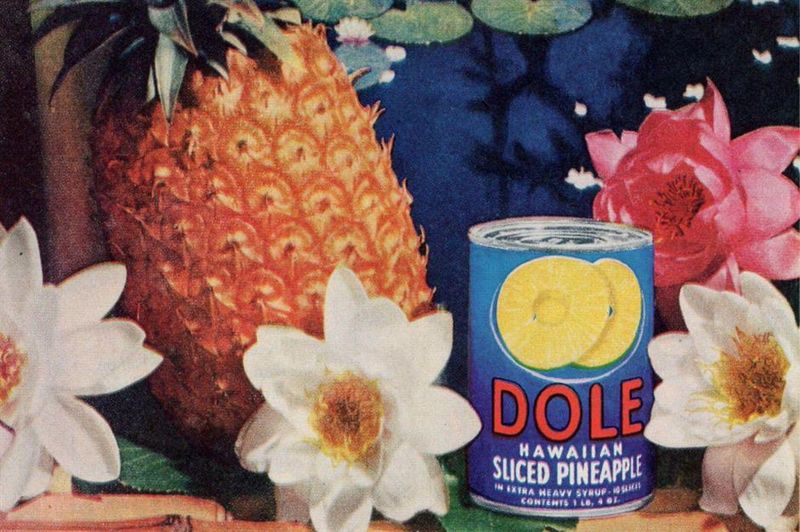
Pantry shelves lined with colorful canned vegetables represented food security and modern convenience to 1950s homemakers. Gone were the days of canning season’s hot, steamy kitchen work – now nutrition came neatly packaged year-round in tidy metal cylinders.
Peas and carrots, often served together directly from the can with just a pat of butter, became the default vegetable portion on dinner plates across America. The slightly soft texture and muted colors were considered perfectly acceptable, even preferable to fresh versions that required more preparation.
Mothers took comfort in the uniform quality and vitamin content boldly advertised on labels. Del Monte and Green Giant became household names, their mascots familiar friends in magazine advertisements. The distinctive sound of the can opener signaled dinner preparation was underway in households across the nation, regardless of season or geography.
12. Dinner Rolls: The Table’s Warm Welcome
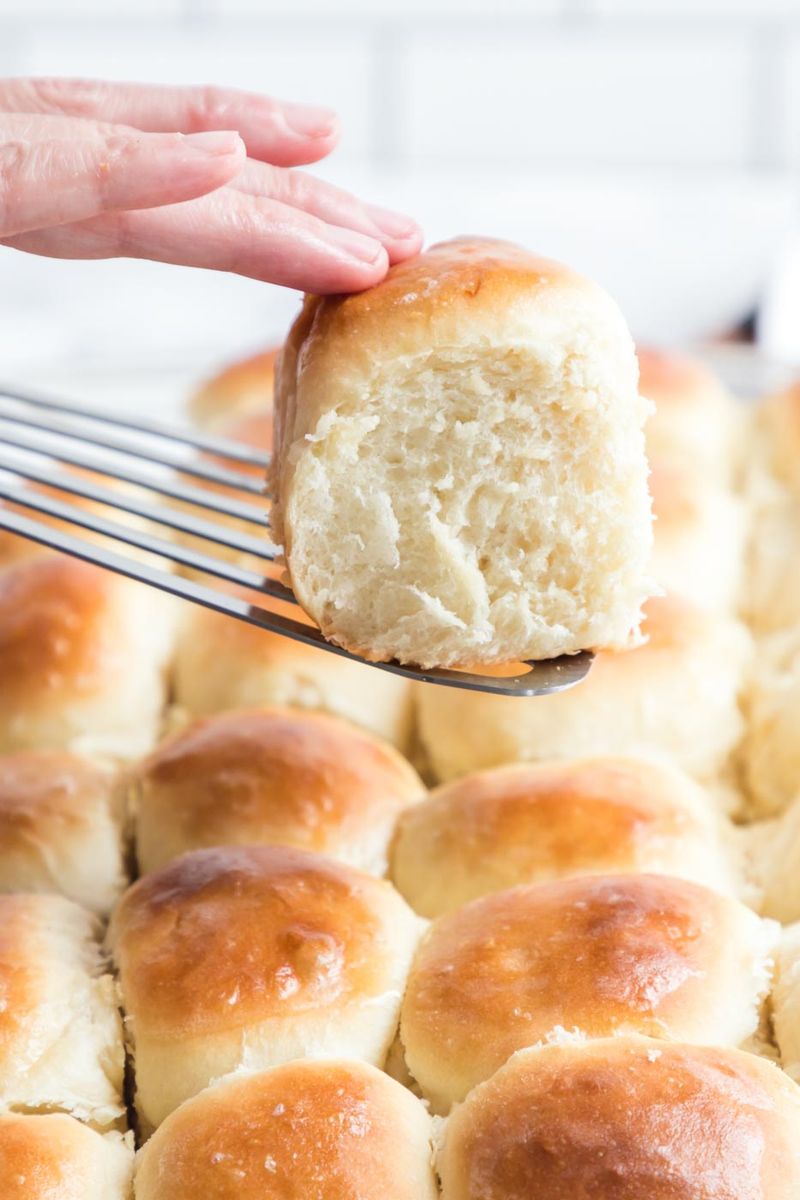
Pillsbury’s iconic pop-open canisters revolutionized the dinner roll, bringing fresh-baked warmth to tables without hours of kneading and rising. The anticipatory tension of peeling back the paper wrapper, waiting for the satisfying “pop” as the seam burst open, became a cherished pre-dinner ritual for children lucky enough to be assigned this task.
Some traditionalists still made rolls from scratch, particularly for Sunday dinners or special occasions. Recipes calling for lard or Crisco produced tender, flaky results that melted in the mouth when served hot from the oven with a generous pat of butter.
Whether store-bought or homemade, these yeasty pillows served a crucial role – sopping up gravies and sauces ensured no flavor was left behind on the plate. The bread basket passed around the table represented abundance and care, a warm welcome to the family meal.
13. Mashed Potatoes: The Essential Side
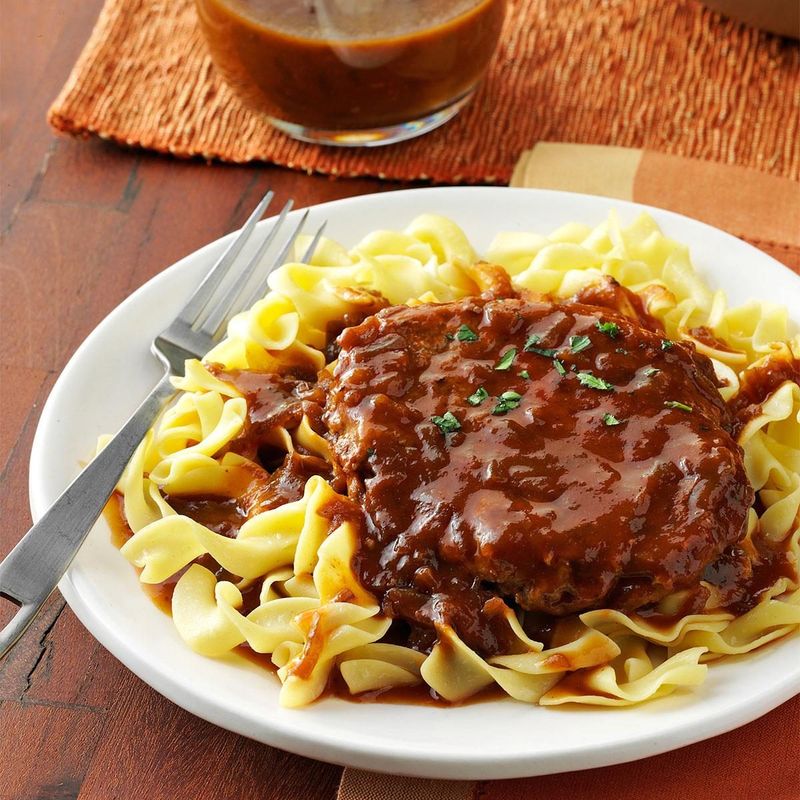
The fluffy white mountain of mashed potatoes formed the foundation of countless 1950s dinner plates, creating the perfect landscape for rivers of gravy. Instant potato flakes, introduced mid-decade, sparked quiet revolution in kitchens across America – suddenly this labor-intensive side dish became a four-minute miracle.
Traditionalists sniffed at the convenience version, remaining loyal to hand-mashed varieties whipped with warm milk and liberal amounts of butter. Electric mixers, increasingly common in middle-class kitchens, created the perfectly smooth texture previously achievable only in restaurants.
Regardless of preparation method, mashed potatoes served as the critical supporting actor to meatloaf, pot roast, and fried chicken. The comforting blandness provided the perfect canvas for more flavorful components of the meal, while offering filling sustenance that stretched more expensive protein portions across growing families.
14. Rice-A-Roni: The San Francisco Treat
When the rice and pasta hybrid hit markets in 1958, it captured the imagination of home cooks seeking exotic flair without culinary risk. The distinctive jingle—”Rice-A-Roni, the San Francisco Treat”—embedded itself in the national consciousness through clever television marketing.
The ingenious combination of rice with broken vermicelli pasta created an intriguing texture difference from plain rice. The flavor packet eliminated guesswork, delivering consistent results even for inexperienced cooks. For middle-class families, this boxed side dish offered a taste of faraway San Francisco sophistication.
Particularly popular with working mothers entering the workforce in greater numbers, Rice-A-Roni represented the perfect compromise between convenience and homemade quality. The 25-minute cooking time allowed just enough “from scratch” feeling while fitting into increasingly busy schedules, and the distinctive yellow box became a pantry staple.
15. Pineapple Upside-Down Cake: The Showstopping Dessert
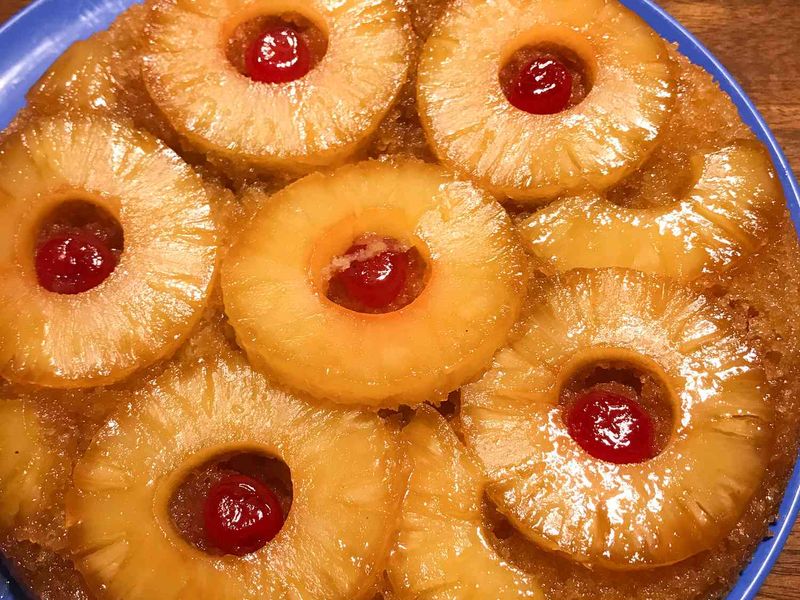
Few desserts captured the optimistic spirit of the 1950s quite like pineapple upside-down cake. The dramatic tableside flip revealed a glistening mosaic of caramelized pineapple rings and maraschino cherries that never failed to elicit delighted gasps from dinner guests.
Cast iron skillets passed down through generations were the traditional baking vessel, though specialty cake pans appeared in department stores as the dessert’s popularity soared. The contrast between the sticky-sweet fruit topping and buttery cake beneath created a textural symphony that defined post-war indulgence.
Canned pineapple slices, perfectly uniform and available year-round, symbolized American agricultural and manufacturing ingenuity. The ruby-red maraschino cherries nestled in each pineapple center added an artistic touch even novice bakers could achieve. This dessert frequently appeared at bridge clubs and neighborhood gatherings where presentation mattered as much as taste.
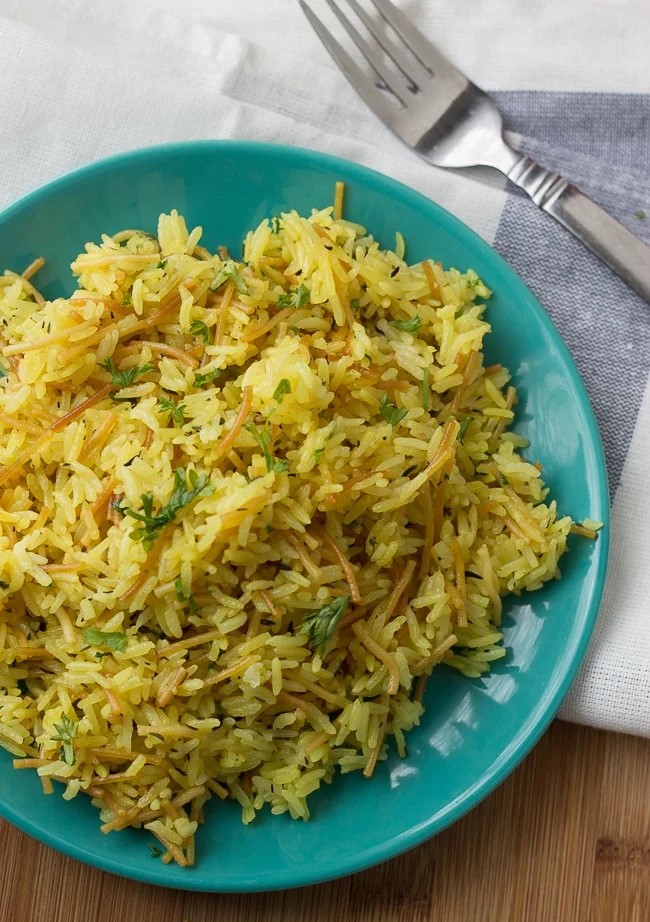
Leave a comment